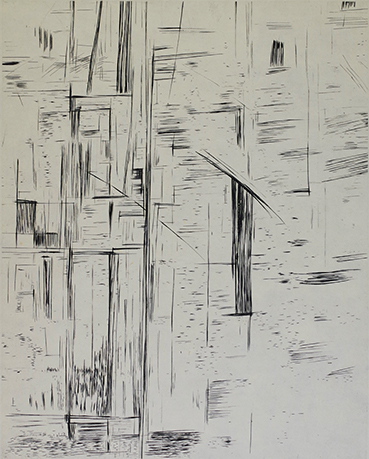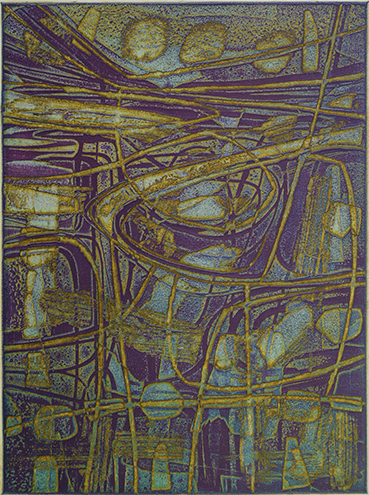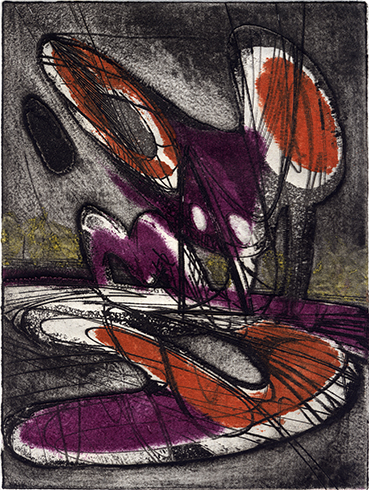

l'atelier de l'amour:
British painter and printmaker Stanley William Hayter began his printmaking career working with the engraved line. His technique was based in Surrealism. He became increasingly influential among European Modernists when he opened his renonwed workshop--Atelier 17--in Paris in 1927. The workshop moved to New York City during the war, but again returned to Paris in 1950. Between Paris and New York, the workshop was filled with some of the greatest names of 20th century art: Miro, Calder, Lipchitz, Picasso, Motherwell, Nevelson, Pollock, Rothko, and de Kooning.
Aside from the innovative techniques that both advanced printmaking in the midcentury and drew hundreds of artists to Atelier 17, one of the--until recently--overlooked aspects of the workshop was the openness that welcomed female artists into the ranks. The collaborative and open sense of the workshop, and the close proximity of the small studio quarters, was bound to be the impetus for romantic involvements.
This proposed exhibition draws on works from the collection of Professor Tyrus Clutter and delves into these relationships. Several artists met and fell in (and sometimes out of) love inside the confines of Atelier 17. The exhibit explores the relationships of these couples, as they met in the studio, but also as they formed friendships among one another and with other studio artists. Interwoven is the influence of the artists on one another and the importance of the print medium and the characteristics of Hayter's teaching method.
The plan for this exhibition is an opening in 2027, the centenary of the founding of Atelier 17. Additional works are being added to the collection still, as well as loans from other collections (in total about 70-80 works will be included). Images shown here, from Tyrus Clutter's collection, are currrently being considered, while others will be borrowed. Included are some photographs of Hayter and Helen Phillips as well as an engraving plate by Phillips. Return to main page here.
The bulk of the research for this project took place in the summer of 2023. Plans for additional research are being explored for 2024. You can donate to the travel expenses through this campaign. An article about the project was printed in the Ocala Gazette in June 2023.
This exhibit follows on the heels of an earlier exhibition from Clutter's collection: Greater than 17: The Art and Influence of Stanley William Hayter and Atelier 17. A catalogue for that exhibit can also be viewed in this PDF. The Greater than 17 exhibit opened at the Webber Gallery of the College of Central Florida in the fall of 2021 (see installation shots here) and later at the Leepa-Rattner Museum in early 2022. Professor Clutter is considering venues for both exhibitions. To inquire about hosting either of them and for more details contact tyrus@tyrusclutter.com .
Additonal exhibits include a collection of Christmas and New Year prints, available for 2025 and 2026, and an exhibition of Women of Atelier 17 that will also run in 2027.
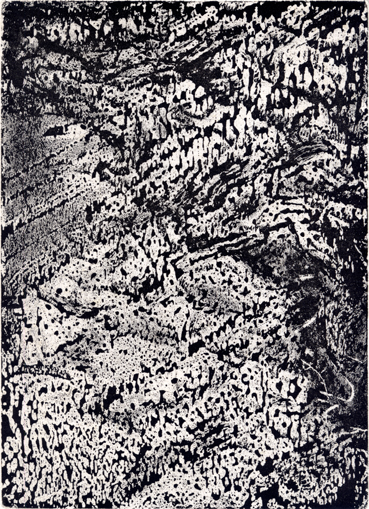
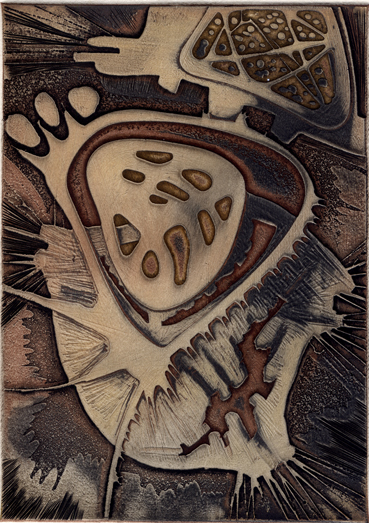
arts and letters
joan miro and chris ritter and leo calapai:
Beginning in the 1930s, Bill Hayter was involved in multiple projects that combined text with engravings. Sometimes these were poems by surrealist writers, such as the Solidarite portfolio with the poem by Paul Eluard. Joan Miro began his association with Atelier 17 in the 1930s, in Paris. Miro, a spaniard, was actually one of the few artists who participated in both the Solidarite and Fraternity portfolios of 1937 and 38, to support the the Republican Spanish Children’s Fund during the civil war.
After the invasion of France during WWII both Bill Hayter and Miro were among the many artists who fled France for the United States. In 1947 Miro came to New York and, once again, worked at Atelier 17. Hayter, Miro, the poet Ruthven Todd, along with Fred Becker worked to discover the mysterious printing process that William Blake had used with his intaglio plates that incorporated the artist/poet’s own handwriting. The experiments led to new ways of working in etching for Miro and furthered the atelier’s experiments with color printing.
Miro actually utilized his new working method for his print for the first edition of a periodical portfolio produced by the Laurel Gallery in New York in 1947 (Laurels Number One), and run by Chris Ritter (who did not actually work at Atelier 17, but did some of his own experiments in printmaking, including the cover image for that portfolio). Bill Hayter also did a small intaglio work for the first edition of the Laurels portfolio.
The use of the “Blake Method” continued in the next few years by several pairs of artists and poets for the “21 Etchings and Poems” project. This included poets such as Herbert Read, George Reavey, Dylan Thomas, and Frank O’Hara. The Atelier 17 associated artists included both Hayter and Helen Phillips, as well as Willem de Kooning, and Fred Becker. The state proof included here is the collaboration between Letterio Calapai and William Carlos Williams.rn, and the two later married and moved to New York where Krishna taught for some years at New York University.
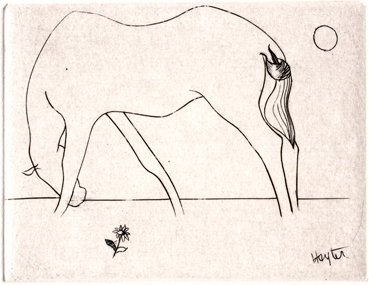
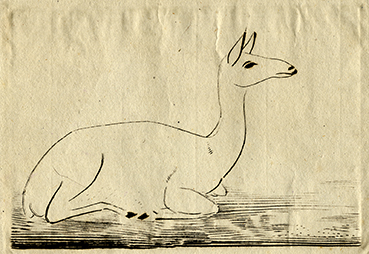
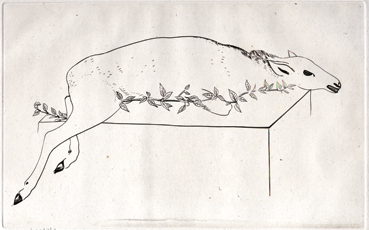
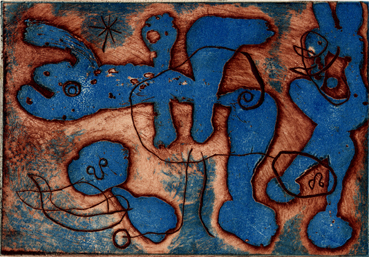


unintentional matchmakers
shirley wales:
Shirley Wales, a Canadian-born artist who came to Atelier 17 in the 1950s, played an important role in terms of one of the couples of Atelier 17. When Jim Monson came to study at the atelier in 1970 he first lived in a hotel. After about a year that became less practical and he wanted to rent something for a longer term. Shirley was renting her Paris home and Jim joined another renter to share costs. When the original renter left, Jim didn’t need the whole house, but Hector Saunier knew that the German artist Isolde Baumgart was hoping to come back to Atelier 17 again. Baumgart and Monson decided split the rental and the rest is Atelier 17 couples history.
maria helena vieira da silva + arpad szenes:
Hungarian-born artist Arpad Szenes began his career in Budapest, being influenced by Cubism, Futurism, and Constructivism in the early 1920s. By the mid-1920s he began to travel through Europe, eventually landing in Paris where he spent time in Montmartre drawing caricatures in the cafes. By 1928 he was taking classes at the Grande Chaumiere. There he met the acquaintance of a young Portuguese artist named Maria Helena Vieira da Silva, who had recently moved to Paris. The two continued traveling but she was again in Paris the following year and began working on engraving at Atelier 17. By 1930 the two married and Vieira da Silva convinced Szenes to try his hand at engraving at Atelier 17. The two became important figures in the Montparnasse art scene until they left for Portugal in 1939 because of the impending war. Eventually, because of Szenes jewish heritage, they fled to Brazil during the war years. After the war they returned to Paris and Vieira da Silva, in particular, became a leading painter of the Art Informel movement in Europe, a concurrent movement to Abstract Expressionism in the U.S. Though not formally connected to Atelier 17 after their early days, both artists retained relationships with Atelier 17 artists for many decades.
joseph hecht:
There would probably have never been an Atelier 17 without the work and influence of the Polish-born engraver Joseph Hecht. Hecht had moved to Paris in 1920 and met Hayter in 1926, not long after Hayter had arrived. Both Bill and Edith (Fletcher) Hayter were initially studying the techniques of burin engraving and etching when Bill Hayter was approached to provide engraving lessons himself. Hecht is especially remembered for his engravings of animal imagery, and those who studied with him and in the early days of Hayter’s workshop often produced animal imagery, as well.
